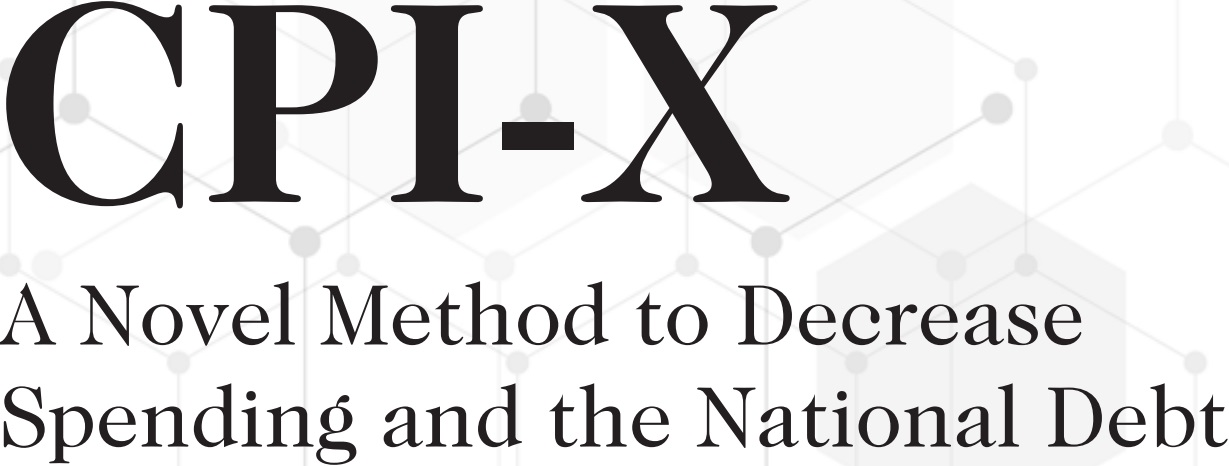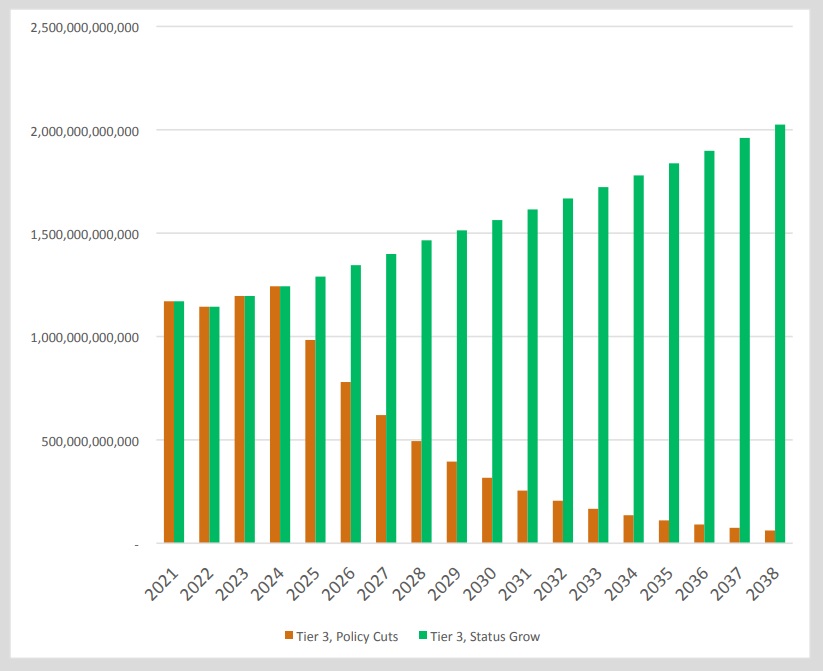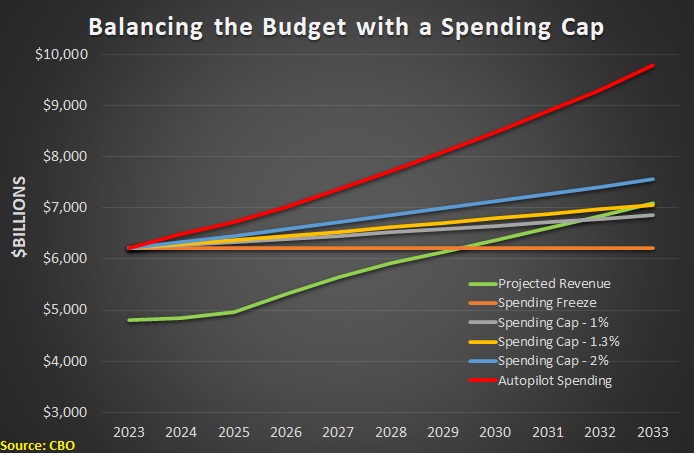January 25, 2024 by Dan Mitchell @ International Liberty
The ideal fiscal policy is a spending cap and the specific design is not terribly important so long as the net effect is to have government spending grow slower than the private sector.Switzerland’s Debt Brake complies with this requirement.
Colorado’s Taxpayer Bill of Rights complies with this requirement.
Today, let’s look at another proposed spending cap, one that aggressively seeks to return government to a more manageable size.
In a study published by the Heartland Institute, Darren Nelson proposes a “CPI-X” approach that would impose formulaic restrictions on various parts of the budget over a 15-year time period.
And those restrictions would mean genuine cuts, not the fake Washington definition (a slower-than-planned spending increase becomes a cut). And that tougher approach would mean huge savings. Here’s some of what he wrote.
Decades of profligate spending has led to a perilous economic situation. …the solution would tether federal spending to the Consumer Price Index (CPI), with a wrinkle. It is called CPI-X (or “CPI minus X”). What works to keep publicly regulated utilities in check can also keep federal spending in check. …The period for cuts would cover the next three presidential terms and would bring federal spending back to 2008 levels. …That is a 50 percent cut, and the savings of $75 trillion would result in complete debt retirement plus $19,347 in annual relief for taxpayers.
Here’s a chart from the study that looks at social welfare spending left on autopilot (green bars) compared to spending under the CPI-X rule.
And here’s the same approach when looking at subsidies and other spending that is in the category of crony capitalism.
The CPI-X approach dramatically slashes this spending (orange bars) compared to the autopilot trendline (green bars).
The good news is that a CPI-X spending cap would dramatically shrink the burden of government spending.
The bad news is that there’s no possibility of getting that kind of approach anytime soon. Especially with two big spenders running against each other for the White House.
Heck, there’s not even a chance of getting a far-more modest spending cap that would merely be designed to balance the budget over a 10-year period.
But at least we know the right approach if Ronald Reagan ever gets reincarnated. Or Calvin Coolidge.
P.S. Here’s one final point that deserves attention. The author points out that balanced budget requirements are not very effective, particularly since politicians would use such a rule as an excuse for tax hikes.
A spending rule, by contrast, actually addresses the real problem of excessive government.
…some fiscal conservatives tout solutions like a Balanced Budget Amendment as a cure-all for the constant increases in federal spending, this is a half-baked idea because it would also likely lead to steep tax increases… CPI-X addresses the problem directly by actually imposing extensive and long-overdue reductions in federal spending.
For what it’s worth, spending caps have attracted support from unexpected places. There are pro-spending-cap studies from left-leaning bureaucracies such as the International Monetary Fund (here and here) and the Organization for Economic Cooperation and Development (here and here). There are also similar studies from the European Central Bank (here and here).





No comments:
Post a Comment